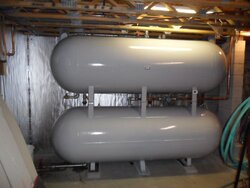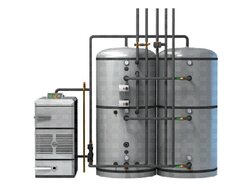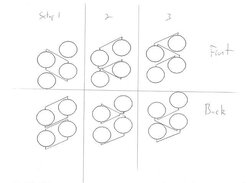First off I am not an engineer  I also haven't the slightest comprehension on thermodynamics.
I also haven't the slightest comprehension on thermodynamics.
I went searching but couldn't find any info on this particular idea. Would it be a viable option if one need 2000 gallons of storage to use four 500 gallon propane tanks with two stacks. First stack of two on floor level, second stack starting with bottom tank halfway up first stacks bottom tank. Some sort of platform would be needed to get the second stack that high but that isn't a big deal.
Or just stacking two 1000 gallon tanks?? Has anyone attempted this? It seems like a lot of weight would be on the bottom tank.
I am curious which setup would work better for heat addition and removal.
 I also haven't the slightest comprehension on thermodynamics.
I also haven't the slightest comprehension on thermodynamics.I went searching but couldn't find any info on this particular idea. Would it be a viable option if one need 2000 gallons of storage to use four 500 gallon propane tanks with two stacks. First stack of two on floor level, second stack starting with bottom tank halfway up first stacks bottom tank. Some sort of platform would be needed to get the second stack that high but that isn't a big deal.
Or just stacking two 1000 gallon tanks?? Has anyone attempted this? It seems like a lot of weight would be on the bottom tank.
I am curious which setup would work better for heat addition and removal.




